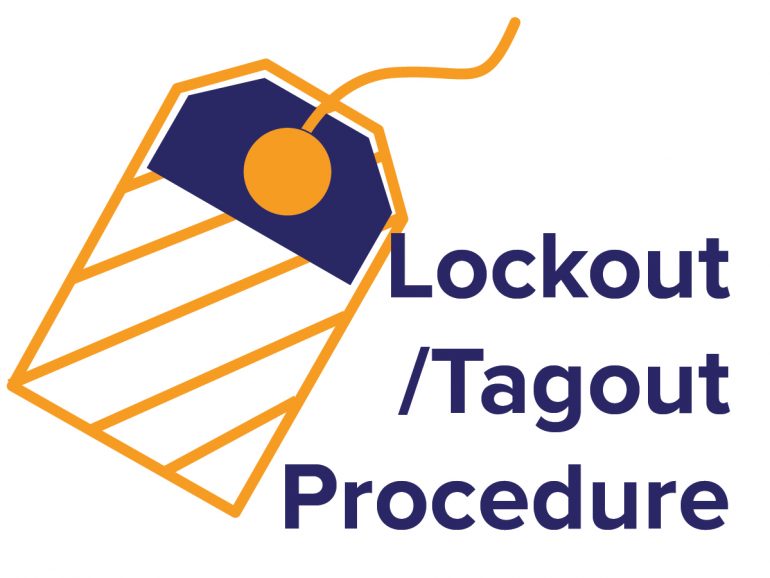Focus of the Month – Lockout/Tagout (LOTO)
LOTO Procedures
Machinery can be a great boost to employee productivity, allowing one worker to complete as much work as dozens of employees could without the machine. For all their benefits, though, machines cannot tell the difference between flesh and other materials and can severely injure employees. Operators must be protected by machine guards that limit worker exposure and provide sufficient protection from hazards during typical operation of the machine. Machine guarding doesn’t protect workers who maintain and service the machines though, since their work often requires them to remove the guards and bypass the safety features that protect operators. This is where Lockout /Tagout comes in to play.
Lockout/Tagout, or Control of Hazardous Energy (29 CFR 1910.147), is an OSHA regulation implemented to protect maintenance and service workers in the performance of their duties. It specifically addresses hazards that could injure employees from the unexpected energization or start up of machines or equipment, or when stored energy could be released, while servicing or maintaining equipment. Employees are protected by following the procedures to shut down the machine and ensure that it cannot activate while they are working on it.
Who can use Lockout/Tagout (LOTO)?
Can every employee use LOTO? No, they cannot. Only your company’s authorized employees can use LOTO. To be an authorized employee, they must be trained on your company’s LOTO program including recognition of the actual hazardous energy sources in your facility, the type and magnitude of the energy available in the workplace, and the procedures for isolating and controlling hazardous energy. In short, they must be trained to properly understand, apply, and follow LOTO procedures. They must also be authorized by the employer to use LOTO procedures.
Authorized employees are not the only ones who need training. Employees who operate machines or equipment that will be maintained or serviced under LOTO, or work in an area where LOTO is used, are affected employees also need training. They must be trained on the purpose of LOTO and to understand the use of LOTO procedures. They must also never attempt to restart or reenergize equipment that is locked and/or tagged out. The consequences for doing so could be fatal for the authorized employee working on the equipment.
LOTO Procedures
The specific actions for applying LOTO will differ from equipment to equipment, and from facility to facility. The general LOTO procedure should follow a basic 6 step process.
- Prepare for Shutdown
- Notify affected employees that maintenance will be performed under LOTO. The authorized employee should review the hazards and LOTO procedures for the equipment that will be serviced.
- Shutdown Equipment
- The authorized employee will shut down the equipment following company and/or manufacturer’s requirements.
- Isolate Equipment
- Isolate the equipment from the hazardous energy sources using the equipment specific LOTO procedure.
- Place Locks and Tags
- Locks and/or tags should be placed on valves, breakers/electrical disconnects, blank flanges, and any other point called out on the equipment specific LOTO procedure.
- Release/Block Stored Energy
- Release stored energy from the stored energy hazards identified in the LOTO procedure, such as releasing springs, blocking elevated parts that could drop, stopping moving parts, draining fluids, venting gases, etc.
- Verify Equipment Isolation
- Confirm that workers are clear from the area, locking devices are securely in place, and that the equipment is isolated. Once this is done, attempt a normal startup to confirm that the equipment does not start.
Maintenance and service workers are exposed to significant hazards when performing their work. To ensure their safety, it is essential that LOTO procedures are developed and followed. See our Lockout/Tagout Procedure Self-Checklist for additional information on OSHA compliant Lockout/Tagout programs.









